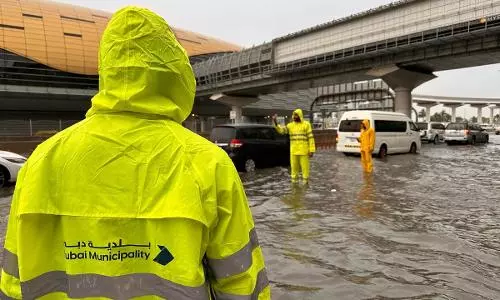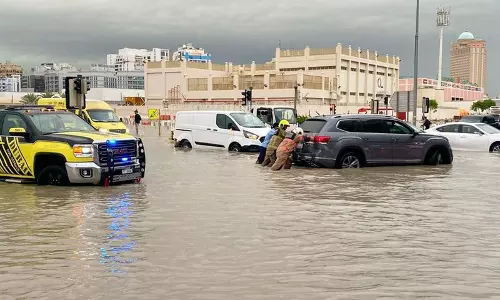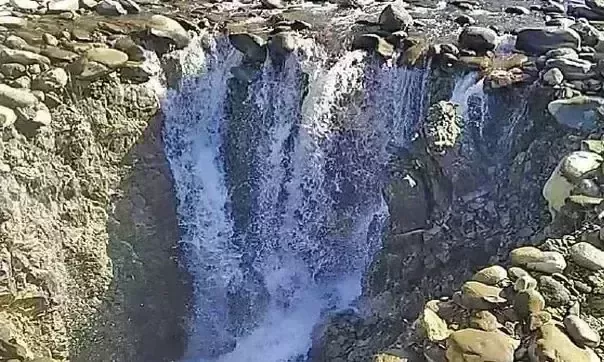
Large sinkhole formed in Kashmir natural: district administration
text_fieldsSrinagar: The district administration of Anantnag of Jammy and Kashmir informed on Friday that the sinkhole formed in the Bringi nullah in the Kokernag area of the south Kashmir district on February 11 was a natural event and needed not to worry, PTI reported.
A sinkhole is a cavity formed in the ground that drains surface water underground.
The district administration said that both measures to mitigate the occurrence as well as efforts to understand the scientific reasons behind it were initiated. It ensured that the intervention to mitigate the sinkhole situation was scientifically rational and not counterproductive.
Deputy Commissioner of Anantnag, Piyush Singla, said that a similar sinkhole had appeared in the district 27 years ago and it had resulted in the formation of Achbal spring. He added that investigation is essential on the present sinkhole so that no springs in other areas should dry up because of it.
He added that technical teams from the National Institute of Technology, Srinagar, Department of Earth Sciences, Kashmir University, Fisheries Department and Geology and Mining Department visited the site to conduct tests and understand the event.
The deputy commissioner said that the detailed studies revealed that the event was natural. The rock formation beneath the site was soluble limestone which was going through chemical weathering, forming cavities inside. This must-have resulted in a sudden cave-in. It could be possible that there must be a large network of underground reservoirs of water since water has been falling into the hole since it formed, he added.
The official mentioned the widely documented broad distribution of carbonate rocks in South Kashmir. This could cause the formation of swallow holes, sinkholes, conduits, shafts, caves etc. Mapping these cave network systems in Anantnag could help create a vulnerability profile of the district to assist infrastructure building, he said.
























